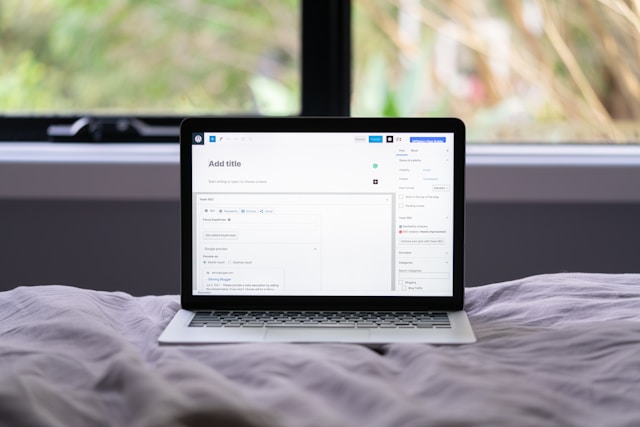How to Create a Positive File Sharing Experience
Individual work provides meaningful variables and results entirely under your control, but collaborating with a team can yield more developed and innovative results with higher productivity. On a larger scale, collaborative work can be more advantageous—however, it can be risky in terms of file sharing.
Quick Links
File sharing is a crucial aspect of information and collaboration with numerous organizational applications. Through passing documents from one worker to another, they can fill each other’s gaps and create a solid end product. However, it can potentially result in the opposite with one wrong action.
Creating a Positive File Sharing Experience
Team collaboration is long-term work that can affect your organization’s future. Therefore, it’s better to establish a positive file-sharing system in your business as early as possible, regardless of the nature of your work. To make your file sharing experience seamless and organized, take note of the following tips:
1. Use the Right File Sharing Platform
Choosing an appropriate platform where all of your business’ file-sharing occurs is the most essential part in creating a positive file sharing experience. If we were still operating on the analog, you wouldn’t want to store your physical documents in an unprotected storage box, right?

To find a competitive file sharing platform, assess the needs and preferences of your team first. Preferably, choose between top, guaranteed file-sharing platforms like Digital Pigeon that offer the following essential features:
- Privacy and security
- Large data storage capacity
- Offline availability
- Device compatibility
- Data recovery
- User support
- Third-party app and software integrations
2. Establish Organized File Structure and Format
After choosing your file-sharing platform, it’s time for some actual file-sharing action. Since users have different purposes and needs in using the platform, it’s up to your team to set up an effective system.
To make browsing and storing easier for everyone, organize your files’ structure by categorizing them and putting all relevant files only into their assigned folder. The use of consistent naming conventions helps identify content without opening the document, thus saving time and avoiding hassle.
3. Test the Waters
Once the file organization system is set, it’s important to test out your file-sharing platforms and system before conducting a full migration. A great customer experience of using the file-sharing platform can provide helpful insights into using it, but it isn’t always guaranteed to work in your case. Hence, test the waters first with a few team members.
Before committing to the paid business version of your chosen file-sharing platform, take advantage of its free features first to see if it’s the right one for your business—after all, that’s what free trials are for.
When testing the platform and system, don’t share and store any important files yet. You can make sample documents on different file formats, evaluate upload and download speeds, utilize all present features, and assess the overall experience.
4. Educate and Train Your Fellow Users
Your company’s file-sharing platform and solution won’t work if its users don’t have enough literacy and competency in using it. After testing the waters and deciding that you’ll stay on the platform, the next step is to implement awareness and training for your team members.
Security risks increase as more users navigate in one platform, so prioritize educating your members about cybersecurity. It would be better to create individual accounts for each user and assign unique names to identify them quickly. In this way, it’ll be easier to detect unusual activity.
You can also resume testing your waters in this step and see if all users can adapt to the system appropriately. While the established file-sharing system personally works for you, factors such as the device used and internet speed vary among employees.
Take-Home Message Creating a positive file sharing experience is crucial to your team’s operations. As ideas and content have transformed from paper to screen, individuals and groups have to develop new ways to share, access, and save their documents. By doing so, users can achieve efficient collaboration, protect digital assets, cut down on operational costs, and save time.
Common Data Migration Challenges and How to Overcome Them
In the era of technology, data serves as the backbone of companies. Whether it's client details,…
0 Comments13 Minutes
SIEM at a glance (Security information and event management)
You have a contingency plan like most other intelligent businesses, but what if it fails? And,…
0 Comments12 Minutes
Breaking the Mold: Unconventional Methods for Business Growth with WordPress
If you have implemented WordPress for your website, or are considering migrating to it, chances…
0 Comments13 Minutes
Web and Mobile App Development Trends to Consider in 2024
As technology continues to evolve at a rapid pace, staying ahead is essential for developers and…
0 Comments8 Minutes
What Are the Top 10 Web Development Tools for Beginners?
Web development is the art of building and updating web pages that Internet users Interact with.…
0 Comments13 Minutes
Does Your Branding Need A New Look?
From time to time, it’s important and necessary to check over your branding, to ensure that it is…
0 Comments4 Minutes
Essential Skills for AI-Driven Digital Marketing
Digital marketing is changing a lot. Artificial intelligence (AI) is becoming really powerful and…
0 Comments10 Minutes
A Handbook for Crafting Outstanding Email Automation Plans
Email marketing is an essential tool for communication in digital marketing platforms. Managing…
0 Comments8 Minutes








